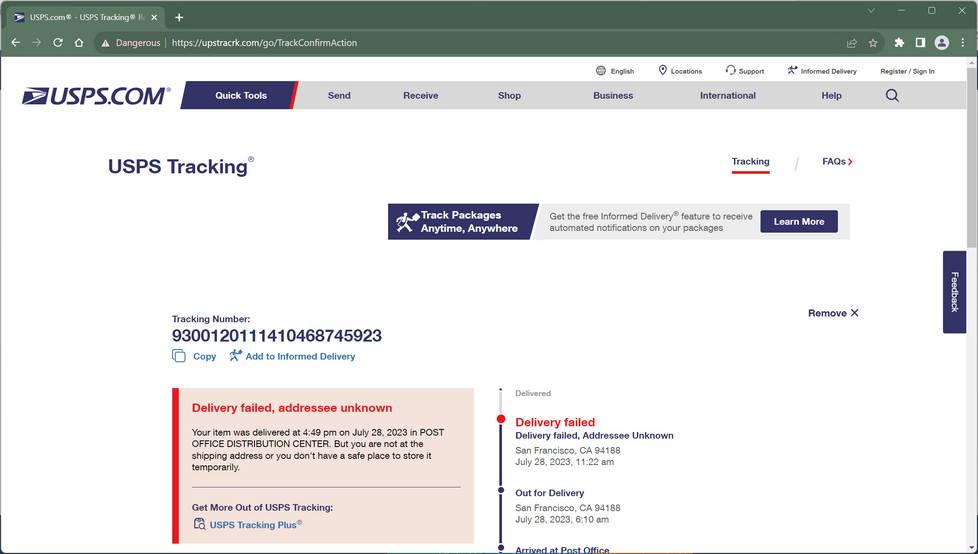Have you received a suspicious text or email with the USPS tracking number 9300120111410468745923? This widespread scam aims to steal personal information by claiming a fake delivery failure. Learn how to spot this 9300120111410468745923 USPS scam and avoid identity theft.
This article will break down the anatomy of this phishing attack leveraging a fabricated USPS tracking number. We’ll outline the exact techniques scammers use to try and dupe unsuspecting targets. Read on to ensure you don’t fall victim to this insidious identity theft trap.
Here’s How the 9300120111410468745923 USPS Scam Works
This scam starts with an email or SMS claiming to be from USPS and containing the tracking number 9300120111410468745923.
The message states that delivery of a package with this tracking number has failed because the addressee is unknown. It provides a link to “resolve” the delivery issue by verifying your identity.
However, 9300120111410468745923 is not a real USPS tracking number. The link goes to a fake USPS site controlled by scammers to steal personal information.
On this phishing site, users are prompted to input details like name, email, address, and phone number to “reactivate” the failed delivery. In reality, this data is harvested for identity theft.
Why Scammers Use a Fake 9300120111410468745923 Tracking Number
By including an actual-looking but fake tracking number, the scam seems more believable. Most recipients don’t think to confirm tracking numbers when awaiting packages.
The urgent call to action presses victims to click the phishing link quickly without scrutinizing it. Scammers know people rush to resolve delivery snags.
Generating a random but legitimate-looking tracking number takes seconds. But verifying if it’s real requires navigating to the USPS site. This extra step buys scammers crucial time.
How to Detect the 9300120111410468745923 USPS Scam
While designed to mimic legitimate alerts, some clues indicate it’s a scam:
- Generic greetings like “Dear Customer” instead of your name
- Senders use non-official email addresses or phone numbers
- Multiple grammar and spelling errors
- Links redirect to non-USPS domains
- Site requests private data to “reactivate” delivery
- Real USPS never requests sensitive info via links
Avoiding the 9300120111410468745923 USPS Scam
Follow these tips to avoid becoming a victim:
- Verify the tracking number at USPS.com. Fake numbers won’t return results.
- Check the sender’s address or phone number against official USPS contacts.
- Look for telltale signs like poor grammar and spelling.
- Don’t click links and instead navigate directly to USPS.com.
- Never enter private data on third-party websites accessed via links.
- Use multi-factor authentication and keep software updated.
- Contact USPS if you suspect a scam using their name without authorization.
Beware This Malicious 9300120111410468745923 USPS Phishing Attack
This scam leverages a fake tracking number to cloak itself in the guise of legitimacy. But armed with awareness of how phishing tactics work, you can avoid being victimized. Stay vigilant and think twice before clicking any links regarding package deliveries. Don’t let scammers steal your personal information through this insidious 9300120111410468745923 USPS scam.











